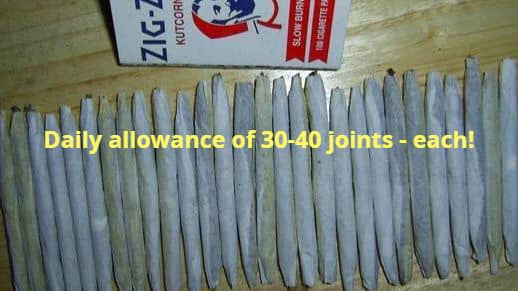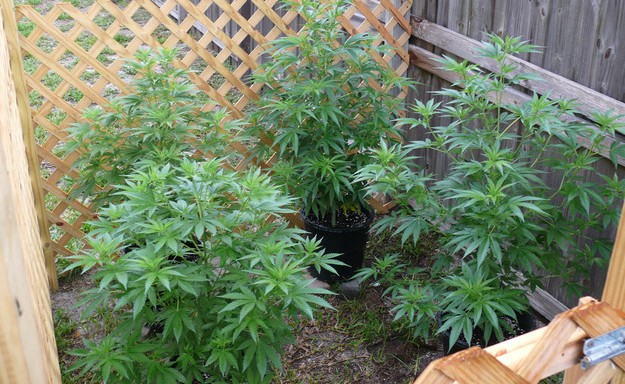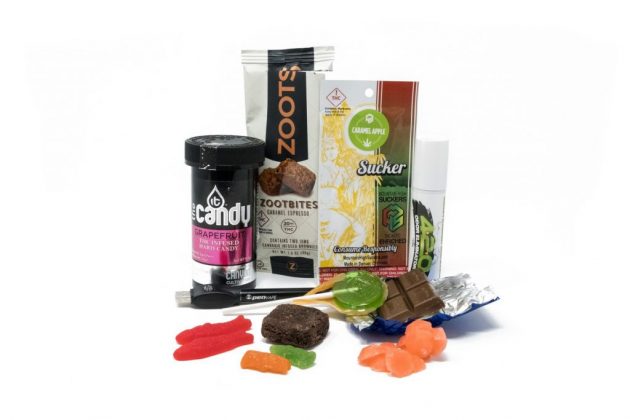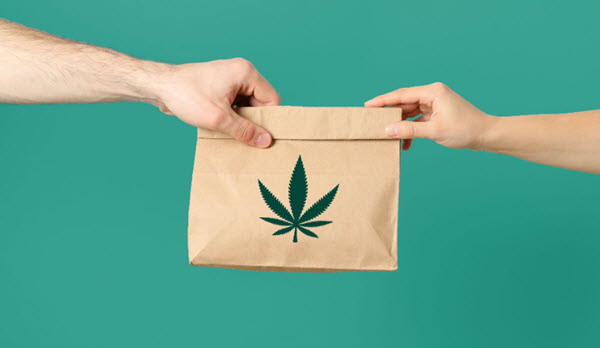The Government proposes:
A MINIMUM PURCHASE AND USE AGE OF 20
The problem:
HAS IT WORKED FOR ALCOHOL?
Research shows that adolescents access alcohol and tobacco primarily through friends and family, not from retailers. Why would cannabis be any different? Given the draft law allows cannabis growing for personal use, it is highly likely that legalisation will result in increased access through young people’s social networks, and through the gangs / black market operating outside their school gate.
By legalising the drug, young people will see drug use as normalised, their perceived risk of harm related to drug use will decrease, and their use will increase
The Government proposes:
PURCHASE WOULD BE LIMITED TO 14 GRAMS A DAY PER PERSON
The problem:
HOW MUCH!?
That’s anywhere from 30–40 joints you can buy, per person – per day.

The Government proposes:
POSSESSION WOULD BE LIMITED TO 14 GRAMS A DAY PER PERSON
The problem:
WHO WILL BE CHECKING!?
Once again, that’s 30–40 joints per person. And these limits will be virtually impossible to police. Do we stop and search every person?
The Government proposes:
ANY PERSON WILL BE ALLOWED TO GROW TWO PLANTS FOR PERSONAL USE, TO A LIMIT OF FOUR PER HOUSEHOLD
The problem:
LOOK AWAY, KIDS.

The problem with private homes being used as ‘grows’ is that dope dealers will simply stay under the radar with multi-location grows, and children will be exposed to drug cultivation – right in their backyard.
Products can be diverted to the black market
A dealer could grow up to 9 plants and the fine is between $500 and $1,000. But according to the police, one mature processed plant could be worth approximately $1,000 street value.
Home grows are not subject to quality control, potency controls or labelling requirements.
Allowing plants at home will increase access for young people and even children.
The Police Association admit that the legal grow limits would be hard to police.
How many joints can be produced from indoor home grows?
Obviously, these numbers are very general because grow techniques vary, but conservatively one marijuana plant in a hydroponic indoor set-up could produce a harvest about every 110 days and from that harvest the grower would get between 198 grams and 311 grams of buds (Median 254.5grams) and also about 198 grams to 311 grams of leaf (Median 254.5grams).
In NZ the buds are desired for smoking because they have the highest amount of THC and the leaf is also smoked. However now in the U.S with legal states whether medicinal or recreational Leaf is now most commonly used by individuals to make concentrated THC by way of Butane Hash Oil (extremely high potency THC), which is also on a side note causing a lot of explosions and fires in the U.S.
Therefore annually one plant could be producing a median of 1,527 grams smokable product per annum.
We estimate that the mean weight of marijuana in a joint is 0.32 g (95% Bayesian posterior interval: 0.30–0.35).
So even if you were generous and said that .5 grams per joint then essentially one plant would yield as a Median 3,054 smoking joints per annum equivalent to 8.36 joints per day.
NZ Legislation is proposing up to 4 plants can be home-grown
4 plants the median would be 12,216 smoking joints per annum equivalent to 33.46 joints per day over the year of the psychoactive substance THC
The Government proposes:
“SOCIAL SHARING”
The problem:
DOPE DEALING FROM HOME
“Social sharing” is allowed as long as there is no ‘material benefit’ – but this is not defined, and how is this policed? This simply equates to “cash deals” and “under-the-table” dealing. And remember that up to 40 joints can be shared – per person – per day!
The Government proposes:
EDIBLES AND DABBING WILL BE LEGAL

The problem:
ENCOURAGES USE OF HIGH-THC PRODUCTS, ESPECIALLY BY YOUTH
Many of these products are targeted at young people. Every other overseas jurisdiction has been engulfed with edibles, either through the legal market (Colorado, California), or through the black market (Uruguay, Canada (now legal in Canada)). The market share of bud has fallen and the market share of THC-infused edibles and THC concentrates continues to rise.
Allowing edibles will encourage people to use cannabis who otherwise wouldn’t have – especially young people. Banning specific child-friendly edibles like gummi bears won’t make any difference. The industry will simply adjust their product.
Allowing edibles can lead people to consume too much. Because the effect may be delayed, it is harder to judge when to stop.
THC concentrate is mixed into almost any type of food or drink – not just gummi bears. The potency of edibles (several times that of an average joint) and their attractiveness to kids have led to serious problems in legalised states.
Because of legal home ‘grows’, the ability to make high-THC edibles and dabs – for example, butane hash oil – will occur and will be very difficult to police.
The Government proposes:
PROHIBITS CONSUMPTION IN PUBLIC PLACES, BUT ALLOWS USE AT HOMES
The problem:
SO MUCH FOR ‘SMOKEFREE’!
SmokeFree 2025 – but a joint or edible in the home is fine – along with “social sharing” with other users.
This sets a terrible example to young people and children about drug use, and risks their welfare if parents and others are under the influence of drugs in the home.
The Government proposes:
LICENCED PREMISES
The problem:
NORMALISING & ENCOURAGING
These will be drug venues (cannabis coffee shops) including BYO cafes where cannabis consumption is normalised and effectively encouraged.
These venues allow cannabis, cannabis products and accessories.
The Government proposes:
CONTROLS AND REGULATIONS ON THE POTENCY OF CANNABIS
The problem:
15% IS ‘STRICT’?
According to the legislation, THC levels (the psychoactive chemical in cannabis) are initially set at 15% THC for smoking. This is significantly higher than the Woodstock Weed of 2-4%.
When the potency is limited, this will simply empower the black market and the gangs who will provide high-THC products demanded by users.
The Government proposes:
‘RESTRICTIONS’ ON MARKETING AND A ‘BAN’ ON ADVERTISING CANNABIS
The problem:
LOOK AT HOW ALCOHOL AND TOBACCO INDUSTRIES HAVE ACTED
A legalised market simply opens the door to a powerful industry focused on maximising profits, not health.
As we know from the past actions of the tobacco industry, any restrictions on the cannabis industry’s ability to advertise their product will either be flouted, lobbied against, or they will look for alternative ways to target their customer base.
Faced with limited advertising options, ‘Big Marijuana’ overseas are turning to cannabis ‘influencers’. Advertising agencies use ‘influencers’ with tens of thousands of followers to those with millions of followers in order to dodge regulations, and to market their products.

The Government proposes:
HARM MINIMISATION MESSAGING IN THE RETAILING OF CANNABIS
The problem:
THE POT INDUSTRY WILL DO EVERYTHING TO HIDE THIS INFO
There is no explanation of what those specifically are – and the cannabis industry (like the tobacco and alcohol industry) will be desperate to understate the harms. For example, there is no mention of using terms such as psychosis, depression, anxiety or addiction.
The Government proposes:
LIMITS SALE OF CANNABIS TO SPECIFICALLY LICENCED PHYSICAL STORES (NOT ONLINE OR REMOTE SALES)
The problem:
IMPOSSIBLE TO POLICE
The internet is notoriously difficult to police, and it won’t be difficult for consumers to find dealers with high potency products available for purchase who will flout any regulations.

The Government proposes:
STATE LICENCING REGIME – ALL STAGES OF THE GROWING AND SUPPLY CHAIN ARE LICENCED AND CONTROLLED BY THE GOVERNMENT
The problem:
SIGNIFICANT POLICING RESOURCES WILL BE NECESSARY
That means checking every home grow, every user for their age, testing all potencies, all licensed premises, management of associated waste products, offences and penalties for non-compliance – the list goes on. This means that the police will be just as busy – if not busier.
The Police Association are concerned that one of the proposed benefits is to free up police resources, but that is not likely to happen. And if the ‘legalisation and control’ was be to closely monitored, that would put more demand on the police.
Tax and pricing could also be a problem. If you can’t drive the price down, that is not going to get rid of the black market.
The Government proposes:
NO SPECIFIC CONTROLS AROUND VAPING
The problem:
WHICH YOUNG PEOPLE LOVE, AND IT HAS HIGH-THC
It’s this tiny device that’s quickly taking over cannabis consumption – and young people love it, especially because it’s so easy to hide, and produces little-to-no smell when consumed. You simply screw it into an inexpensive, rechargeable pen and inhale. One recent US study showed increased use by 14-18 year olds of newer forms of consumption – vaping and edibles.
The only concern expressed in the bill is primarily around emissions from vaping
The Government proposes:
NO ALLOWANCE FOR LOCAL COUNCILS TO HAVE THE POWER TO REGULATE THE LOCATION OF POT SHOPS – JUST ‘CONSULTATION’
The problem:
LOCAL COMMUNITIES SHOULD HAVE A SAY
Local councils in consultation with their communities should be given the power to control the location of these drug retailers, and the power to ban them altogether, if so desired. This has been left to the Cannabis Regulatory Authority (s16)
The Government proposes:
NO SPECIFIC LEGISLATION AROUND ROAD SAFETY MEASURES
The problem:
DRUG DRIVING WILL INCREASE
The rights of people to be safe on the road outweighs the privilege of smoking weed. If a person has THC in their system, we don’t want them on the road endangering other drivers and families. Roadside drug testing and the likelihood of increase in drivers driving stoned and causing fatalities on the road are being ignored. A Colorado survey in 2018 found 69% of marijuana users have driven under the influence in the past year, and 27% admitted to driving high almost daily. A New Zealand study found that habitual users of marijuana have about 10 times the risk of car crash injury or death compared to infrequent or non-users.
The Government proposes:
NO SPECIFIC LEGISLATION AROUND WORKPLACE SAFETY AND WORKPLACE DRUG TESTING
The problem:
DRUGS DON’T WORK IN THE WORKPLACE
In the US, marijuana legalisation has had serious ramifications for businesses. Increased marijuana availability and use has increased the number of employees testing positive for marijuana in the workforce. In NZ’s bill, there is no provisions relating to dealing with the added costs to the workforce in absenteeism, accidents, healthcare, additional workplace training and insurance premiums. Studies consistently show marijuana users have significantly lower levels of commitment to their work than non-users, and are absent more often.
The Government proposes:
NO SPECIFIC LEGISLATION AROUND DISCOURAGING PREGNANT MUMS FROM CONSUMING
The problem:
NEWBORNS FAILING DRUG TESTS
The US National Survey on Drug Use and Health found that 28% of women living in low-income areas tested positive for marijuana use during pregnancy. Up to 60% of these young women continue marijuana use throughout pregnancy due to a decreased perception of risk and stigma.
The Government proposes:
‘PREVENTION’, ‘EDUCATION’, ‘DRUG-FREE’ ?
The problem:
DRUGFREE WORKS BEST
‘Prevention’ is used in the context of preventing harm from use (s21) or over-consumption (s202)
‘Education’ is mentioned only in the context of addressing harmful cannabis use (s21), and to promote responsible use (s12)
‘Drug-Free’ is missing.
If you enjoyed this BFD article please consider sharing it with your friends.
